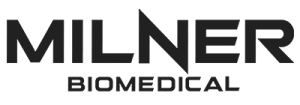1 – Pain relief, anti-inflammatory & healing
Laser decreases nerve sensitivity by decreasing bradykinin; a pain eliciting chemical. It normalizes ion channels (cellular gatekeepers) and releases endorphins (body’s natural pain reliever) and enkephalins (which are related to endorphins) that produce an analgesic effect. It also has a pain-blocking effect on certain nerve fibres which aids in breaking pain cycles of conditions.
Pre-exercise LLLT (laser therapy), mainly with 50 J dose, significantly increases performance and improves biochemical markers related to skeletal muscle damage and inflammation. [1]
Laser increases ATP, which is stored energy (ATP = adenosine triphosphate). This increased energy accelerates the repair processes of the cell. Laser also causes a widening of the arteries and veins around the injury which helps to remove damaged cellular debris and increase nutrients and oxygen. White blood cell activity is promoted leading to a more rapid repair process. Also, some molecules that increase inflammation are reduced, and beneficial antioxidants like superoxide dismutase are increased.
Laser is particularly effective in extinguishing painful trigger points. It is also an effective way of stimulating acupuncture points without the discomfort associated with needling
Laser therapy is a proper adjuvant therapy in flexor tendon repair. Evidently, laser therapy promotes tendon healing, alleviates the pain, and assists flexibility of soft tissue and joints, leading to the tremendous improvement in patient cooperation and compliance. [2]
2 – Enhanced recovery, accelerated tissue repair & cell growth
Speeding up the rate at which our skeletal muscle & connective tissue can repair is another fundamental aspect to treating patients. The faster they recovery & repair, the faster they can perform & build to prevent further injuries or pain occurring.
Photons of light from lasers penetrate deeply into tissue and accelerate cellular reproduction and growth. As a result of exposure to laser light, the cells of tendons, ligaments, nerves and muscles are repaired faster.
The findings of this study demonstrate that preexercise PBMT acts on different functional aspects and biochemical markers. Moreover, preexercise PBMT seems to play an important antioxidant effect, decreasing exercise-induced oxidative stress and consequently enhancing athletic performance and improving postexercise recovery. [3]
Laser light stimulates the building blocks of collagen, which is important in the healing of damaged tissues. Collagen is the essential protein required to replace old tissue or to repair injuries. As a result, laser is effective for sports injuries & superficial open wounds.
3 – Improved athletic performance
Laser light increases the formation of new capillaries in damaged & previously compromised skeletal tissue, which speeds up the healing process & promotes greater function. Blood flow is an inaugural component of sufficient working capacity due to the higher demand of oxygen required during exertion, carried by red blood cells.
The combination of lasers and LEDs increased the time, distance, and pulmonary ventilation and decreased the score of dyspnea during a cardiopulmonary test. [4]
Human muscle tissue is comprised of trillions of cells, & they all require ATP energy to function optimally & keep up with the heavy demand of stress, exercise & living.
Pre-exercise PBMT (photobiomodulation) with the combination of super-pulsed laser (low-level laser), red LEDs, and infrared LEDs can enhance performance and accelerate recovery of high-level rugby players in field test. This opens a new avenue for wide use of PBMT in real clinical practice in sports settings. [5]
Laser therapy improves cellular ATP energy synthesis, glycogen synthesis, reduces oxidative stress, protects against exercise induced muscle damage & prevents muscle atrophy by aiding in new myonuclei (supporting muscle hypertrophy). Laser therapy also supports healing & recovery by improving blood flow through heat induced vasodilation & increase oxygen capacity.
Photobiomodulation (laser therapy) can increase muscle mass gained after training, and decrease inflammation and oxidative stress in muscle biopsies. We raise the question of whether PBM should be permitted in athletic competition by international regulatory authorities. [6]
4 – Aids in reducing risk of injuries & re injury
Laser therapy reduces the formation of scar tissue following tissue damage from repetitive motion injuries, which can be a risk factor for future dysfunction, re injury or compensation patterns leading to injury.
Laser light increases the formation of new capillaries in damaged & previously compromised skeletal tissue, which speeds up the healing process & promotes greater function.
Based on consistent findings from all 5 studies, there is grade B evidence to support the use of PBMT over cryotherapy for more effective postexercise recovery of skeletal muscle performance [7]. As we know, the ability for the body to recover plays a crucial role in preventing injuries when exposing them to increased physical demands, if tissues are unable to recover prior to exposure to work again, the risk of injury increases dramatically.
We conclude that PBMT used as single treatment is the best modality for enhancement of post-exercise restitution, leading to complete recovery to baseline levels from 24 h after high-intensity eccentric contractions [8]. Allowing athletes & patients to recover at full capacity, to perform at their best.
Want to trial laser therapy in your team, clinic or with your patients?
Contact Milner Biomedical to arrange or free trial today
[1] Pre-Exercise Infrared Low-Level Laser Therapy (810 Nm) in Skeletal Muscle Performance and Postexercise Recovery in Humans, What Is the Optimal Dose? A Randomized, Double-Blind, Placebo-Controlled Clinical Trial
Adriane Aver Vanin, Thiago De Marchi, S S Tomazoni et al. 2016
[2] Early Low-Level Laser Therapy Improves the Passive Range of Motion and Decreases Pain in Patients with Flexor Tendon Injury
Naghmeh Poorpezeshk, Seyed Kamran Ghoreishi, Mohammad Bayat et al. 2018
[3] Infrared Low-Level Laser Therapy (Photobiomodulation Therapy) Before Intense Progressive Running Test of High-Level Soccer Players: Effects on Functional, Muscle Damage, Inflammatory, and Oxidative Stress Markers-A Randomized Controlled Trial
Shaiane Silva Tomazoni, Caroline Dos Santos Monteiro Machado, Thiago De Marchi et al. 2019
[4] Using Pre-Exercise Photobiomodulation Therapy Combining Super-Pulsed Lasers and Light-Emitting Diodes to Improve Performance in Progressive Cardiopulmonary Exercise Tests
Eduardo Foschini Miranda, Adriane Aver Vanin, Shaiane Silva Tomazoni et al. 2016
[5] Photobiomodulation Therapy Improves Performance and Accelerates Recovery of High-Level Rugby Players in Field Test A Randomized, Crossover, Double-Blind, Placebo-Controlled Clinical Study
Henrique D Pinto, Adriane A Vanin, Eduardo F Miranda, Shaiane S Tomazoni et al. 2016
[6] Photobiomodulation in Human Muscle Tissue: An Advantage in Sports Performance?
Cleber Ferraresi, Ying-Ying Huang, Michael R Hamblin 2016
[7] The Effectiveness of Photobiomodulation Therapy Versus Cryotherapy for Skeletal Muscle Recovery: A Critically Appraised Topic
Stephan R Fisher, Justin H Rigby, Joni A Mettler, Kevin W McCurdy 2019
[8] Photobiomodulation Therapy (PBMT) and/or Cryotherapy in Skeletal Muscle Restitution, What Is Better?
Paulo Roberto Vicente de Paiva, Shaiane Silva Tomazoni, Douglas Scott Johnson et al. 2016


